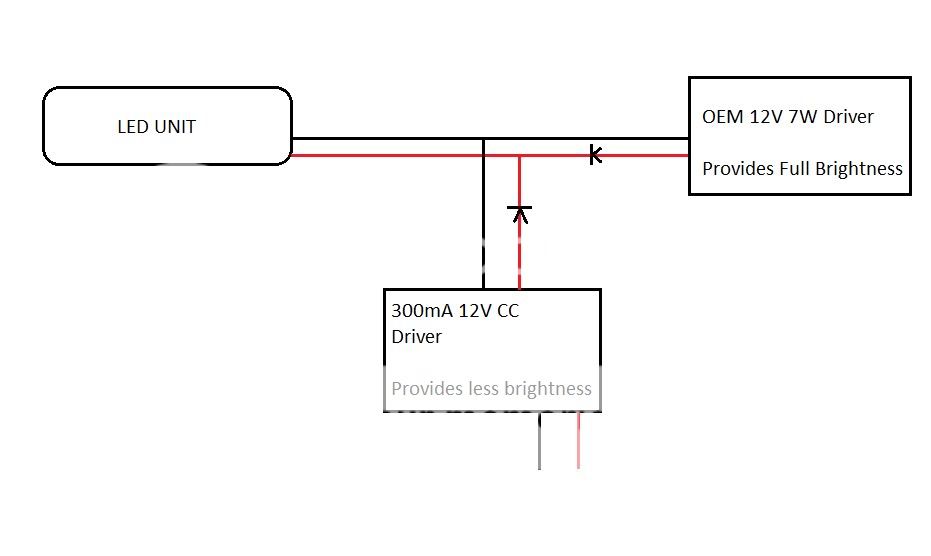If the LED's were bright at first and then dimmed and continue to stay dim even after a cooling period, it sounds like the driver was damaged. Built in thermal protection doesn't always save the chip. I would try it again with a 9V regulator, but this time monitor the chips temperature.
Yes that is what has happened, even after days of cooling down the LED's with one driver come out much dimmer than they used to and gradually dim over 30-60minutes period until its very dim to notice that the led's are actually on. The other driver on the other side is still working fine.
Just wondering what could have caused the driver to damage. Rather than changing out the driver and then waiting months or weeks for it to damage and replace it, if i can prevent the premature failure or find out what is causing it to try and prevent it that will be great. The setup is pretty simple as pictured below, and the custom 300mA driver to provide less brightness is connected via a regular normal dropout 12V regulator with a few capacitors.
One possible cause I am thinking is that the regular regulator might have caused the driver to gradually fail. Because from what I have just learnt, a regular 12V driver has a voltage drop of 2V which means it needs 14V to operate. And on average when I check the car there is mainly 13.8V reading out. So what I am thinking is that maybe the regulator was not operating properly during the times when the voltage dropped below 14 and it let through all the voltage e.g. 13.8V to the driver. And because the driver is rated at 12Vdc, thats why maybe the driver has failed.
Other thing is that the driver details says that the led lamps should be wired in series, but mine are wired in parallel and the voltage does adjust accordingly depending on series or parallel. If i wire it in series, the voltage output adds up per LED. whereas on my parallel setup the voltage output from the driver stays at 3.2V which means it is adjusting the output correctly. So I dont know if that may be something?
Here is a quick sketch of how the 300mA driver is hooked up with the LED unit and the OEM 7W driver.


